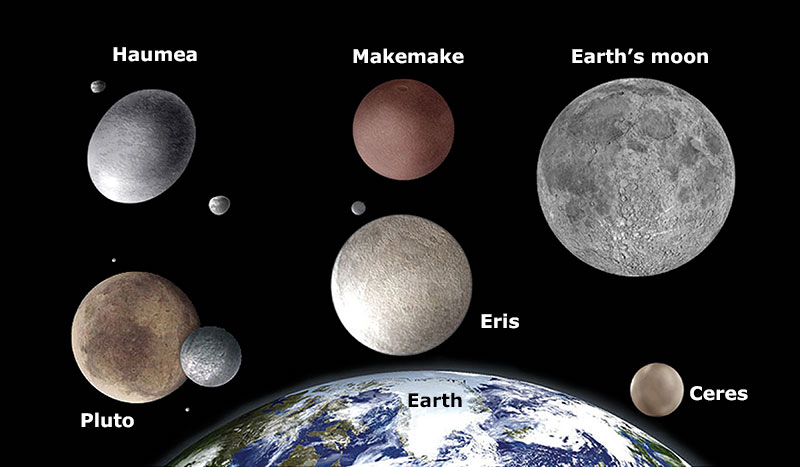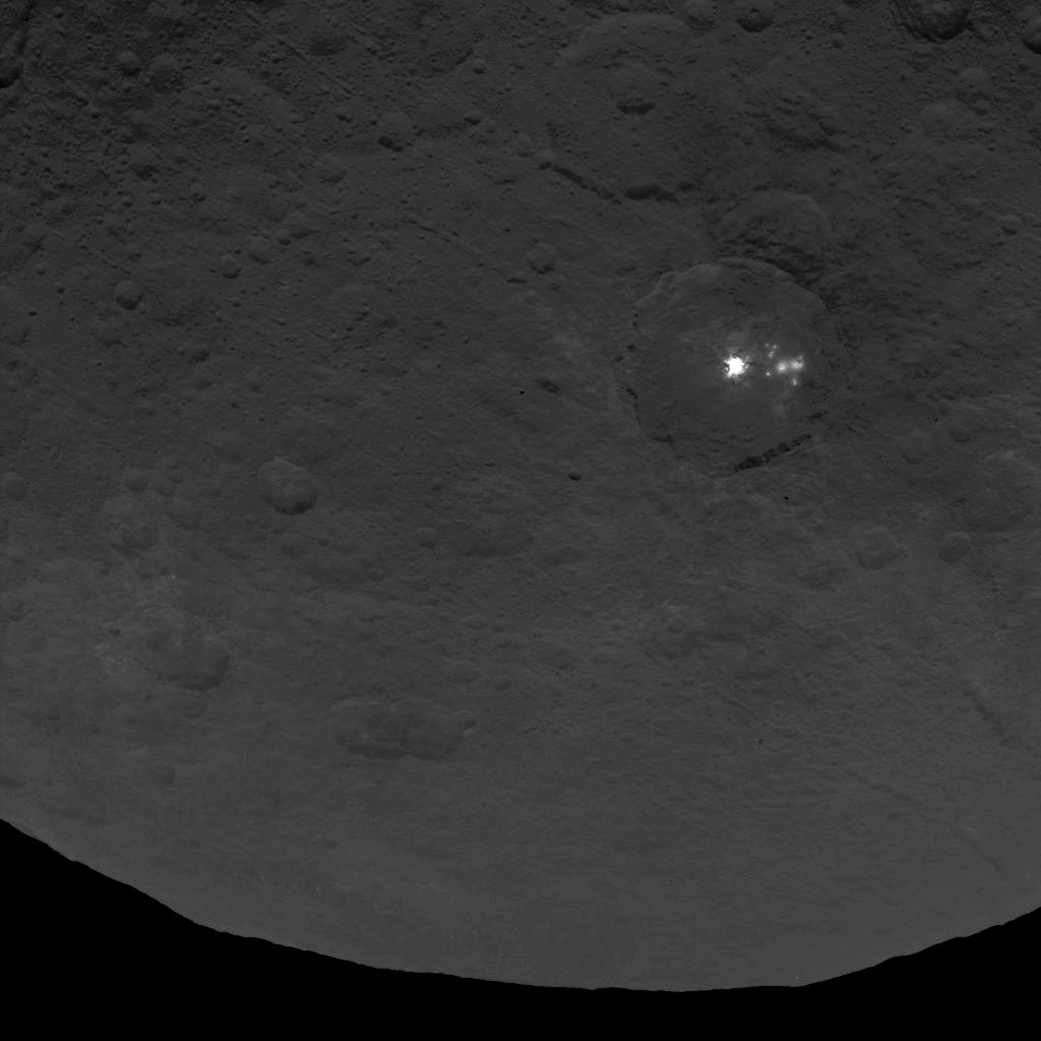Dwarf planet is an object in space that is smaller than a planet and larger than a comet or meteor. A dwarf planet orbits only the sun. It is not a satellite (moon) of another body. The mass of a dwarf planet is large enough for its gravitational pull to cause it to become nearly spherical. But a dwarf planet is not massive enough for its gravitational pull to sweep the region of its orbit relatively free of other objects.

The designation “dwarf planet” resulted from discoveries in the Kuiper belt. The Kuiper belt is a region of space that begins just beyond the orbit of Neptune. Before the 1990’s, scientists had found only Pluto and Pluto’s largest moon, Charon, in the Kuiper belt. Beginning in the 1990’s, astronomers identified many more objects in this region. One such object, later named Eris , rivaled Pluto in size. Many people believed the new object should be designated as a 10th planet. But scientists also discovered other objects of comparable size. The wealth of potential planets led astronomers to consider a new system for classifying these objects.

The recognized authority for categorizing astronomical objects is the International Astronomical Union (IAU). In 2006, the IAU put Pluto and Eris into a new category, dwarf planets. The IAU currently recognizes five dwarfs. They are Eris, Pluto, Ceres , Makemake , and Haumea . All but Ceres are in the Kuiper belt. Ceres is the largest member of the Main Belt of asteroids, between the orbits of Mars and Jupiter.

Rocky bodies probably need to be larger than about 560 miles (900 kilometers) in diameter to have enough mass to become spherical due to gravity. Kuiper belt objects consist entirely, or almost entirely, of ice, which is weaker than rock and more easily shaped. As a result, they may need to be only about 250 miles (400 kilometers) in diameter to be round. Astronomers may yet classify many more Kuiper belt objects as dwarf planets.
Dwarf planets in the Kuiper belt appear small and faint when observed from Earth. Even with the best available telescopes, astronomers have difficulty measuring the exact size and shape of suspected dwarfs. Thus, it is difficult to determine whether an object truly qualifies as a dwarf planet.
